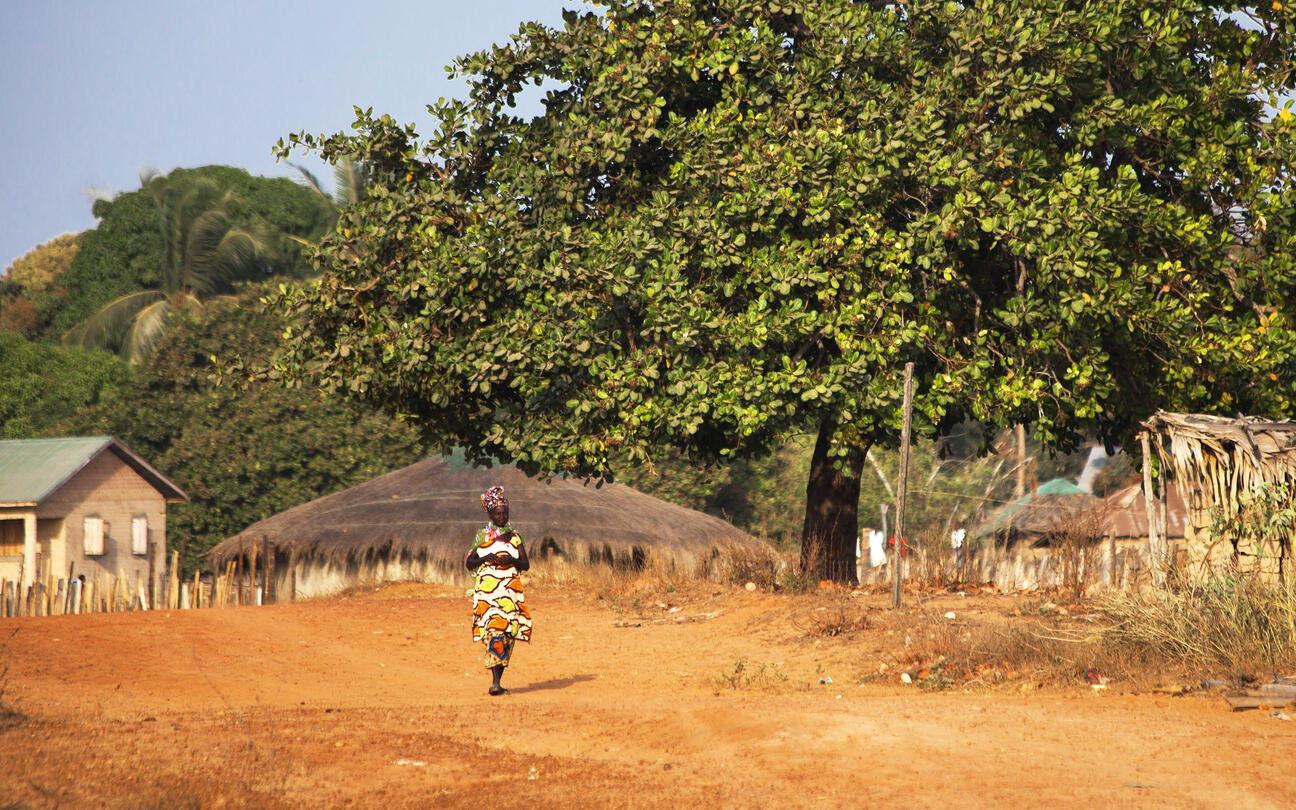
LSTM’s Dr Helen Nabwera is first author on a paper published in EBioMedicine, which looks at interactions between faecal gut microbiome, enteric pathogens and energy regulating hormones among acutely malnourished children in rural Gambia.
Acute malnutrition (also called wasting) is a life-threatening condition that affects more that 45 million children under 5 years of age globally. Children growing up in impoverished communities in low- and middle-income countries are disproportionately affected, and West Africa remains the hot spot for acute malnutrition among children. In its severest form, children may either have oedema where there is an excess of watery fluid collecting in the body tissues amongst other complications (also known as kwashiokor) or may not have oedema but be look emaciated (also known as marasmus).
Although we have some understanding of the possible causes of acute malnutrition such as recurrent infections and inadequate intake of nutritious food, there are still many areas of uncertainty. Due to the regional variations in how children with the severest form of acute malnutrition present, it is important to have a clear understanding of the different pathways that lead to both forms, in order to improve our treatment strategies for these vulnerable children.
The work, published in EBioMedicine, applied state-of-the art computational analyses to investigate the associations between gut bacterial communities (microbiota), gut infections, growth hormonal changes and acute malnutrition among children from 6-24 months of age attending rural primary health care clinics in The Gambia, West Africa.
The key findings were that acute malnutrition is characterised by an increase in harmful bacteria at the expense of beneficial bacteria in the gut, a condition termed dysbiosis. The gut dysbiosis was also associated downregulation of growth enhancing hormones, which suggests that there is likely a complex “multi-system failure” during the development of acute malnutrition among children.
In addition, there were distinct differences in the patterns observed among children with the moderate form of acute malnutrition compared to the those with the severest form of acute malnutrition without oedema. The study has given scientist a clearer understanding of the pathway towards acute malnutrition without oedema among West African children, who are hardest hit by this condition.
Dr Helen Nabwera said: “As a clinician scientist who provided care to these at-risk children with acute malnutrition in The Gambia, the frustration of losing them to this condition despite implementing the recommended treatment strategies is real. I am therefore excited about the prospect of co-designing and evaluating more targeted interventions for these children based on our findings.”
Dr Brenda Kwambana-Adams, Senior Research Fellow in Bacterial Pathogenesis and Genomics at the University College London, the senior author of this paper emphasized the significance of this work as the first in-depth investigation of the complex interplay between acute malnutrition and gut infections (viral, parasitic and bacteria), the gut microbiome and hormonal regulation among children. This study also has a unique focus on West African children with marasmus as opposed to kwashiokor which is more common in other regions of East/Southern Africa and South East Asia.
Professor Martin Antonio, chair of the West Africa Partnerships and Strategy said: “This work was made possible through the excellent collaboration across the research themes at the Medical Research Council Unit The Gambia at the London School of Hygiene and Tropical Medicine (LSHTM) and partners at the J. Craig Venture Institute, USA."
Professor Andrew Prentice, Head of the Nutrition Theme at the Medical Research Council Unit The Gambia at LSHTM said: “Our data add to the growing evidence that a gut dysbiosis, often characterised by a failure in the appropriate maturation of the microbiota as the child grows, may be key to the development of malnutrition. Results from on-going trials of 'microbiota-directed' complementary foods are eagerly awaited."
Professor Stephen Allen, Chair of Paediatrics at LSTM, said: “These exciting findings add to other research suggesting that focussing on the gut microbiota may offer a much-needed new approach to tackling malnutrition.”
Interactions between fecal gut microbiome, enteric pathogens, and energy regulating hormones among acutely malnourished rural Gambian children
Nabwera, HM; Espinoza, JL; Worwui, A; Betts, M; Okoi, C; Sesay, AK; Bancroft, R; ... Kwambana-Adams, BA; + view all (2021) Interactions between fecal gut microbiome, enteric pathogens, and energy regulating hormones among acutely malnourished rural Gambian children. EBioMedicine, 73, Article 103644. 10.1016/j.ebiom.2021.103644.